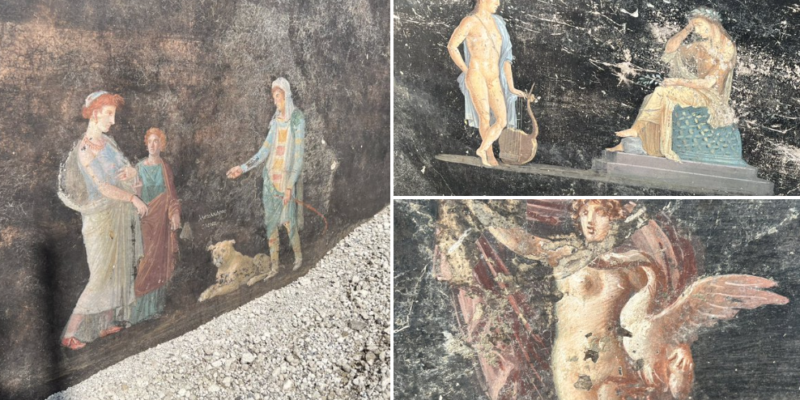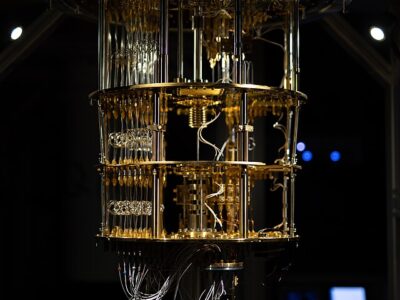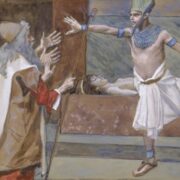
In Pompeii, archaeologists unearthed an ancient dining chamber decorated with a collection of breathtaking frescoes from one of the greatest tales of all time.
It was in the middle of being constructed when then entire city met its fate on August 24, 79 AD.
Each fresco portrays a duo of mythological figures linked to the events of the Trojan War. Spanning approximately 50 feet in length and 20 feet in width, this breathtaking room showcases a mosaic floor crafted from more than a million minuscule white tiles, as reported by the Pompeii Archaeological Park.
🚨NEW 🚨
I was on site at Pompeii shortly after they made the stunning discovery of exquisite frescoes of figures from the Trojan War in a newly uncovered winter dining room.
Story from the site is here:https://t.co/yytoJLDIs5 pic.twitter.com/BBFJw6WnAa
— Jack Blackburn 🇺🇦 (@HackBlackburn) April 11, 2024
A spectacular banqueting room with elegant black walls, decorated with mythological characters and subjects inspired by the Trojan War, is one of the rooms recently been brought to light during the excavations currently underway in insula (block) 10 of Regio IX at Pompeii and which is now completely visible in all its splendour, the Pompeii Archeological Park said in a statement.
It provided a refined setting for entertainment during convivial moments, whether banquets or conversations, with the clear aim of pursuing an elegant lifestyle, reflected by the size of the space, the presence of frescoes and mosaics dating to the Third Style, the artistic quality of the paintings and the choice of characters.
The dominant theme seems to be that of heroism, shown by the depictions of pairs of heroes and deities involved in the Trojan War, but also of fate and, at the same time, of the possibility, often not seized, that humans have of changing their own destiny.
As well as Helen and Paris, indicated in a Greek inscription placed between the two figures with his other name “Alexandros”, there is the figure of Cassandra, the daughter of Priam, who is depicted on the walls of the dining room together with Apollo. In Greek mythology Cassandra was renowned for her gift of foresight and her terrible fate which prevented her from altering the course of future events. Despite her ability to predict the future, no one believed her as a result of a curse that Apollo put upon her for refusing to give herself to him, and she was therefore unable to prevent the tragic events of the Trojan War that she had foreseen. After being raped during the capture of Troy, she would end up being a slave of Agamemnon at Mycenae.
The New York Times explained that “the dining room is part of an insula, the equivalent of a city block, that has been excavated in connection with a project to shore up the perimeter between the excavated and unexcavated areas of the city, part of which remains underground. The project will help better preserve the site.”
“People would meet to dine after sunset; the flickering light of the lamps had the effect of making the images appear to move, especially after a few glasses of good Campanian wine,” Gabriel Zuchtriegel, the director of the archaeological park of Pompeii, stated in the park’s news release. “The mythological couples provided ideas for conversations about the past and life, only seemingly of a merely romantic nature. In reality, they refer to the relationship between the individual and fate.”
The researchers believe that the room was a portion of a building that was in the middle of being restored when Mount Vesuvius abruptly erupted and buried the city in pumice stones and ash in A.D. 79, Mr. Zuchtriegel said in a telephone interview with The Times.
“It seems like the entire insula was being reconstructed at the moment of the eruption,” he told the newspaper.
Zuchtriegel theorized that the reconstruction project might have been launched following an earthquake that had shaken the city “a few months” before Vesuvius blew its top.









